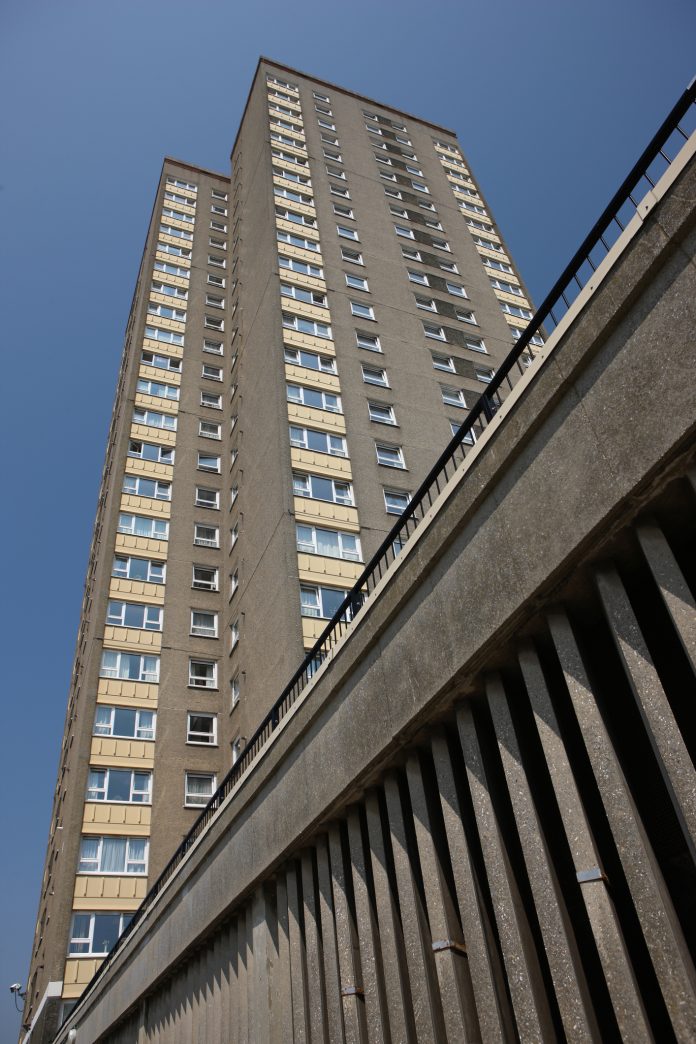The draft Building Safety Bill is intended to introduce major reforms of the safety regime in the wake of the Hackitt Review. Sue Ryan, partner at law firm Gowling WLG, examines the changes it puts forward
The draft Building Safety Bill was published by the Ministry of Housing, Communities & Local Government (MHCLG) for pre-legislative review in July.
Major reforms are signalled. Housing secretary Robert Jenrick described the bill as “a significant milestone on our journey to fundamentally improving building safety and delivering real change that will keep people safer in their homes”.
Following on from the recommendations of Dame Judith Hackitt in her Independent Review of Building Regulations & Fire Safety, the draft bill will introduce more stringent rules for all residential buildings that are either 18m or more in height or more than six storeys tall.
Overview
The intention of the new legislation is to ensure direct accountability throughout the “life” of a building, including design, construction and occupation.
The bill applies to all buildings but many of the detailed provisions apply only to “higher-risk buildings” (HRBs). What constitutes an HRB will be defined and can be amended if necessary. At present, HRB is defined in the draft bill as (summarising) all multi-occupied residential buildings with a height of 18m or more, or more than six storeys (whichever is reached first).
The provisions will apply to in England but some of the changes will also apply to Wales, Scotland and Northern Ireland.
At the same time as publishing the draft bill, the MHCLG issued a statement, Explained: The Draft Building Safety Bill, emphasising the need for clarity and accountability in relation to HRBs.
“At each of these three stages [design, construction and occupation], it will be clear who is responsible for managing the potential risks and what is required to move to the next stage enabling a ‘golden thread’ of vital information about the building to be gathered over its lifetime.”
The cornerstone of the more stringent requirements will be a new national regulator for building safety: the Building Safety Regulator.
Building Safety Regulator
The Health & Safety Executive (HSE) is the Building Safety Regulator (BSR). The BSR will have two key objectives:
- To secure the safety of people in or about buildings; and
- To improve the standard of buildings.
In achieving these objectives, the BSR’s functions and duties will include:
- To implement the new regulatory regime for HRBs.
- To oversee and monitor the safety and performance of all buildings, with ongoing review.
- To establish a system for giving of building safety information (in the Hackitt Report, it was recommended that the existing Confidential Reporting on Structural Safety scheme be extended to cover wider engineering concerns – effectively a confidential “whistleblowing” scheme for building and engineering professionals).
- To set up new committees:
- A Building Advisory Committee to provide advice and information to the BSR.
- A committee on industry competence.
- A Residents’ Panel – to give residents a voice.
- To assist and encourage improvement in competence among the “built environment industry” and building inspectors.
The BSR will have wide-ranging powers both to enforce compliance with the new legislation and existing powers under the Building Act 1984.
Design and construction of higher-risk buildings
Five new dutyholders during design and construction
These provisions align with the Construction (Design & Management) Regulations 2015 (CDM 15) and provide for specific dutyholders who will be responsible for safety and Building Regulations compliance during design and construction. The dutyholder roles will be client, principal contractor, principal designer, contractor and designer.
Gateways
There will be a new “Gateway” regime:
Gateway One will occur before dutyholders are required to be in place and those applying for planning permission.
Gateway Two occurs prior to construction work beginning and is described as a “hard stop” – works cannot begin until the BSR is satisfied that the dutyholder’s design is compliant with the new requirements.
Gateway Three is at completion requiring the dutyholders:
- To hand over the prescribed documents and information (the golden thread) to the Accountable Person.
- To submit to the BSR the prescribed documents and information on the final as-built building.
Golden thread
The intention of the bill is “to ensure that the right people have the right information at the right time to ensure buildings are safe and building safety risks are managed throughout the building’s lifecycle” (the golden thread). This information is to be held digitally – no mention is made of a hard copy being required.
Mandatory occurrence reporting
The bill includes provisions to allow for a Mandatory Occurrence Reporting System to be established – it will be compulsory to report any structural and fire safety occurrences that could cause a significant risk to life safety to the BSR.
Higher-risk buildings in occupation
Accountable Person – during occupation
This is a new role – the Accountable Person (AP) will be the dutyholder during occupation. The AP can be a person or an entity and there can be more than one. Breach of AP obligations involving consent, connivance or neglect will carry severe penalties, including fines and imprisonment.
The AP role will fall to the person or entity with control of the common parts or who has relevant repairing obligations in relation to the common parts, such as the owner or leaseholder of the whole building, or the management company.
An AP will have wide-ranging statutory obligations which will include:
- Registering the building with the BSR and apply for a Building Assurance Certificate (BAC).
- Ensuring the most recent issue of the BAC is displayed prominently in the building.
- Appointing the Building Safety Manager (BSM) who must have the “organisational capability and relevant skills, knowledge, experience and behaviours” – and informing the BSR of this appointment.
- An ongoing duty to assess the building’s safety risks and to take reasonable steps to prevent, control the impact of a major incident.
- Produce and maintain a Residents’ Engagement Strategy, which will include information about where residents can access safety information and a complaints process.
- Maintaining a Safety Case Report (see below) to demonstrate compliance with this ongoing duty.
Registration of a new HRB with the BSR will be pivotal as, once the new legislation is in force, the HRB cannot be occupied until that registration is completed. Existing HRBs will also need to be registered.
Building Safety Manager
The BSM can be a person or an organisation who will support the AP in the day-to-day management of fire and structural safety in the HRB. The BSM’s duties will include:
Managing the HRB in compliance with the Safety Case Report and the BAC.
Liaising with the managing agents (if any) about safety measures and works.
Co-operating with other owners/occupiers of the HRB to ensure an integrated approach to managing risks.
Residents
Residents will be obliged properly to maintain and repair any resident’s items, to take reasonable steps to avoid damage to safety items and to comply with a request made by the AP further to the AP’s duty to assess risks in the HRB and to prevent serious harm.
Reform of the building control regime
The bill will amend the Building Act 1984 in relation to England to provide that the BSR is the building control authority for HRBs and to require the BSR to establish and maintain registers of building control approvers and building inspectors.
The underlying intention of these reforms is to “create a unified professional and regulatory structure for building control”.
Key changes include that:
- Those currently known as Approved Inspectors will have to register as “building control approvers” that can be individuals or organisations.
- There will be a new role of “registered building inspector”, who will be an individual who can advise local authorities etc – existing local authority inspectors and Approved Inspectors are likely to transition into this new role.
Additional provisions
Construction products
The bill creates powers to make provision for regulation of all construction products marketed in the UK. This will move away from the current regime whereby only some of those products are regulated by the EU framework.
The provisions are wide-ranging, set out in Schedule 8 to the current draft bill – key points are highlighted below, including two new product designations.
- There will be a new “safety critical product” which will be on a statutory list and can be regulated.
- Products currently regulated by the EU Framework will become “designated products”.
- The new legislation will also give powers to make regulations requiring manufacturers to ensure that products are safe.
- There will be powers to create new civil penalties and criminal offences for breach of the new regulations relating to construction products.
- The bill creates powers to make regulations allowing the sharing of information about construction products between regulators – the example given in the guidance issued is: between the new national construction products regulatory role, the BSR and local building control.
Direct access to escalation process for social housing complainants
The draft bill enables social housing complainants to escalate a complaint to the Housing Ombudsman service directly, rather than through the “democratic filter” of the existing requirement for social housing residents to make their complaint via a `designated person’, eg an MP, which is the current alternative to waiting eight weeks after the end of their landlord’s complaints process.
Homes Ombudsman Scheme
There will be a new Homes Ombudsman Scheme (HO Scheme), which will allow the homeowners to make complaints against members of the scheme, and to have those complaints investigated and determined independently.
The provisions of the bill will give the government the power to:
- Require that developers join the HO Scheme.
- Issue or approve a code of practice for the conduct and workmanship expected of members of the HO Scheme.
- Make payments to enforcement bodies to investigate breaches and impose sanctions.
Next steps
The bill is currently being considered by a parliamentary committee, who will feedback and give recommendations. There is also consultation with industry stakeholders and residents. Responses to the consultation can be made but the process closes on 12 October.
The government is understandably under immense pressure to finalise this new legislation and it is awaited with interest.
Sue Ryan
Partner
Gowling WLG
+44 (0)370 733 0648
Twitter: @GowlingWLG_UK
LinkedIn: Gowling WLG









![[VIDEO] UK-based firm reveals ‘world’s first’ fully AI-driven architectural project Studio Tim Fu has revealed the 'world's first' fully AI-driven architectural project in Slovenia, developing six luxury villas on the Lake Bled Estate](https://www.pbctoday.co.uk/news/wp-content/uploads/2025/03/Interior-1-studio-tim-fu-218x150.gif)




